Venus Twilight Experiment
Nine cythrographs, designed by Thomas Widemann’s team at the Observatoire de Paris and Paolo Tanga from the Observatoire de la Côte d’Azur, were working in the Asia-Pacific region.
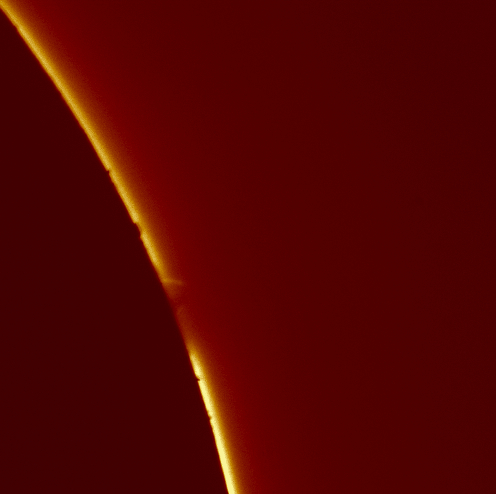
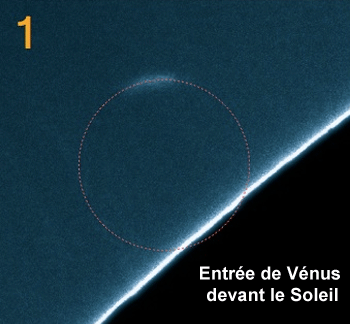
Lowell Observatory, Arizona, USA (animated image)
The ingress of Venus across the solar limb was observed from the Lowell Observatory in Arizona, USA, by Paolo Tanga. These images were obtained with the Venus Twilight Experiment. In spite of atmospheric turbulence, a bright arc appears at the planetary pole, well before the first « contact » with the solar edge (hidden by a mask).
(Paolo Tanga, Lagrange laboratory, Observatoire de la Côte d’Azur/ Thomas Widemann, LESIA, Observatoire de Paris, CNRS, UPMC, Paris-Diderot University)
Longyearbyen, Spitzbergen, Svalbard (Norway) in the land of the midnight Sun
The transit of Venus seen at Longyearbyen, capital of theisland of Spitzbergen, in the Svalbard archipelago, between Norway and Greenland, on the frontier separating the Atlantic and Arctic oceans. (Europlanet / Observatoire de Paris /Observatoire de la Côte d’Azur/ Light curve).
The cytherographs, the experiment (videos)
.Venus and the exoplanets by Thomas Widemann, Paris Observatory
.Preparation of the instrument at the Côte d’Azur Observatory
.History, mesuring the Universe by Jean-Eudes Arlot, Paris Observatory
Photos showing the tone of the expeditions
See these unusual pictures of the teams who left on expeditions to obtain scientific data.
(P. Tanga, Lagrange laboratory Observatoire de la Côte d’Azur ; Thomas. Widemann, Observatoire de Paris /LESIA,
CNRS, UPMC, Paris-Diderot University - Venus Twilight Experiment.)
According to Thomas Widemann, coordinator of the campaign at the Observatoire de Paris, "the worldwide deployment of expeditions was a resounding success for the Venus Twilight Experiment. Data at ingress and egress of the solar disc were obtained at the Lowell Observatory in Arizona, near Mount Isa in Australia, at Haleakala (Maui, Hawaï) and at Svalbard (Norway), where the European Space Aency ESA had organized a scientific conference on the Venus Express mission. The first results were presented at the European conference on planetary science in Madrid (Spain) held during the week of September 23rd to 28th, then at the equivalent American meeting held in Nevada from the 14th to the 19th of October"
Solar observatories in space
They have furnished complementary data.
| Solar Dynamics Observatory : ultra high resolution observations of the Sun and Venus For close to seven hours, a striking effect of perspective gave the illusion that Venus was flying over a glowing solar magma and its atmospheric flames. The Solar Dynamics Observatory SDO tracked the transit of Venus in six channels using six of its instruments. Scientists from the Observatoire de Paris participate regularly in the analysis of data from one of these experiments. All the SDO videos, in various formats including TV HD, and at various wavelengths, can be found here. (Nasa / HMI / AIA) |
The Japanese astronomical satellite Hindo
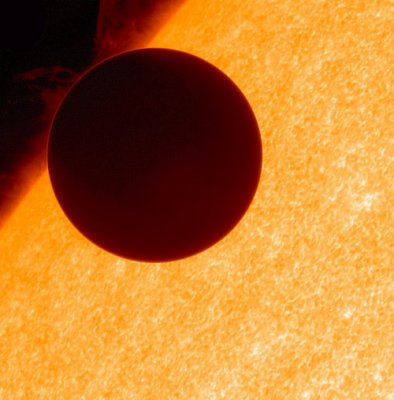
|
The European technological microsatellite Proba 2 ESA’s technological microsatellite Proba 2 tracked the slow march of Venus over the face of the Sun for close to seven hours. The data obtained, together with that from the Venus Express space probe in orbit around the planet, will be compared to data from ground based telescopes in order to learn more about the atmosphere of Venus. (ESA) |
More pictures, obtained in France, in Hawaï, in Svalbard, in Canberra...
by, among others, scientists from the Observatoire de Paris
Observatoire de Haute-Provence, Alps, France

Mauna Haleakala, Maui, Hawaï

Longyearbyen, Spitsbergen, Svalbard (Norway)
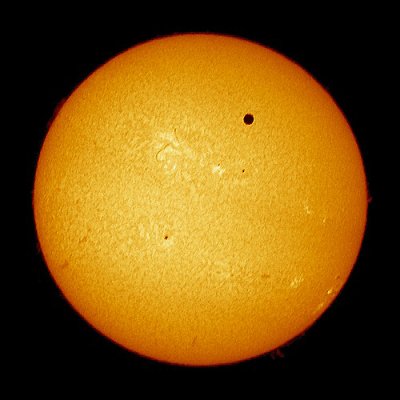
Canberra, Australia
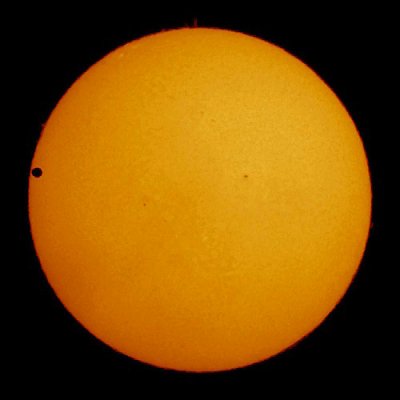
Everything about the Venus Twilight Experiment (in English)
